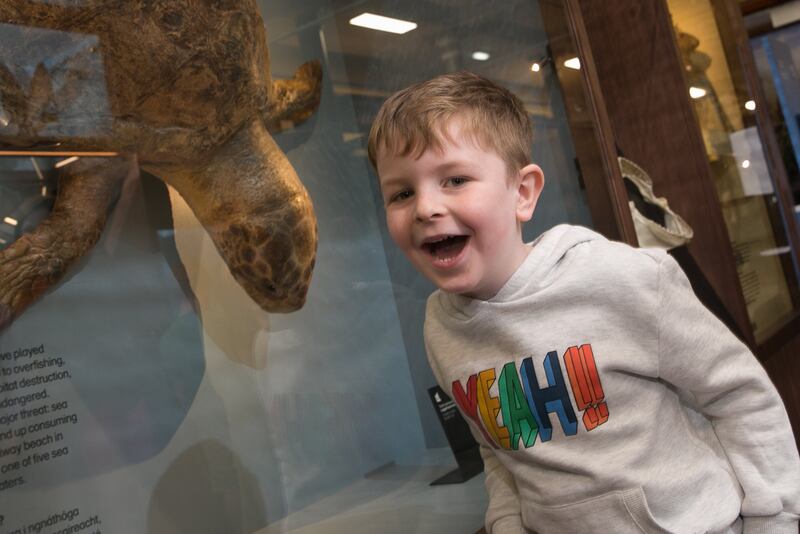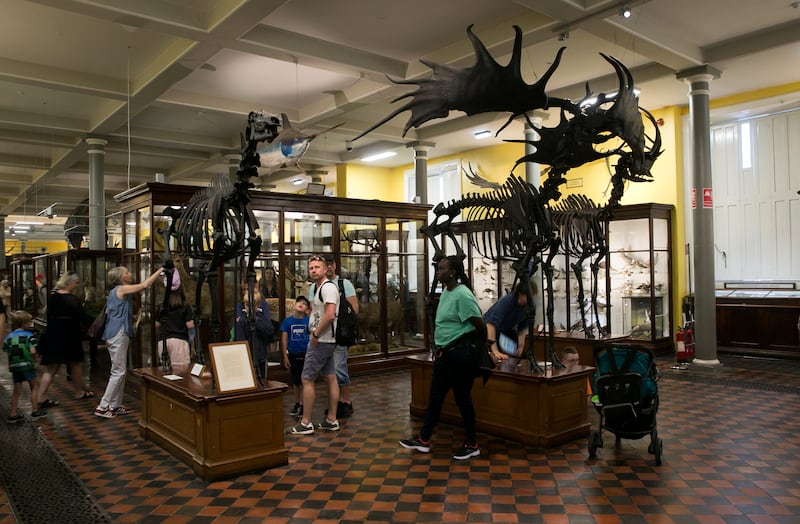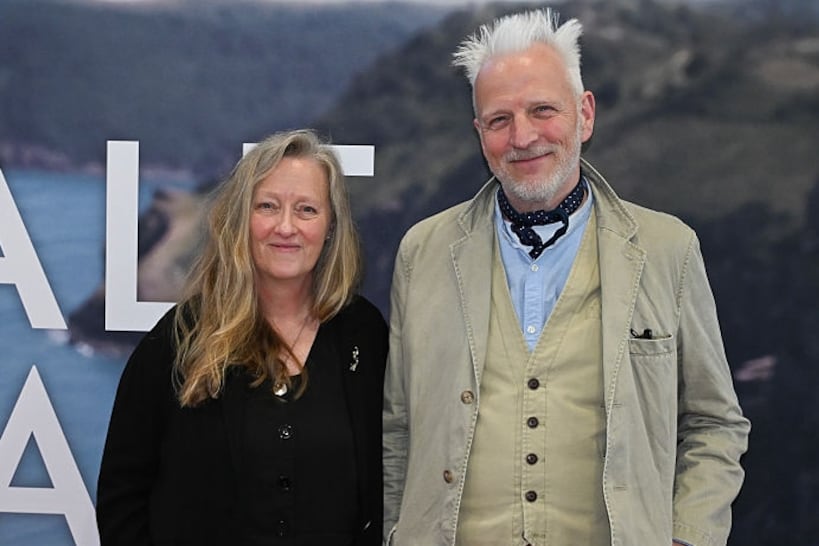The Natural History Museum was “fully booked and busy” as it reopened to the public for the first time in more than two years on Tuesday morning.
The museum, which is the oldest in Ireland, having opened in 1857, was closed in 2020 for renovation works.
Affectionately known as the Dead Zoo, it is home to 10,000 or so dead mammals, birds, fish and insects.
Traditionalists will be glad to see the museum has reopened as it was before, except for the fact the upper levels remain closed due to ongoing renovation works.
READ MORE
The ground-floor exhibition returns without any changes – it includes Irish animals such as the giant Irish deer, a selection of Blaschka glass models and the “wonder cabinet”, which was the favourite of Augustin (13) and Ashton (10) who visited the museum for the first time on Tuesday with their grandfather Seamus Moloney.
“We were just walking through town and I said we should go into this museum because I’ve never been here before and wanted to check it out,” Augustin said.
“It’s so cool here. Especially the wonder cabinet, that’s the best bit.”
“It has loads of skulls and it even has hyenas,” his brother, Ashton, pointed out.

Mr Moloney hadn’t been to the museum in “a long time” but had brought his own children when they were small.
“It’s a brilliant museum, especially for the kids,” he said.
It was “great to be back” for Sinéad and her three children Nóinin (7), Laoise (5) and Oscar (3) who visited for the second time.
“I like this museum because I like all the different types of insects,” Laoise said, while her sister Nóinin “really liked the stuffed animals”.
Admission is free to the museum but advance booking is required due to limited capacity, with no group bookings larger than six people permitted.

Investigative works on the roof are ongoing. The Office of Public Works has built a roof access platform underneath the glass ceiling to investigate the roof and understand the structure of the building, which is more than 160 years old.
The museum will be making the first floor of the museum accessible as part of its redevelopment project.
It will close again sometime in 2023 when conservation work begins on the glass panels in the roof.














